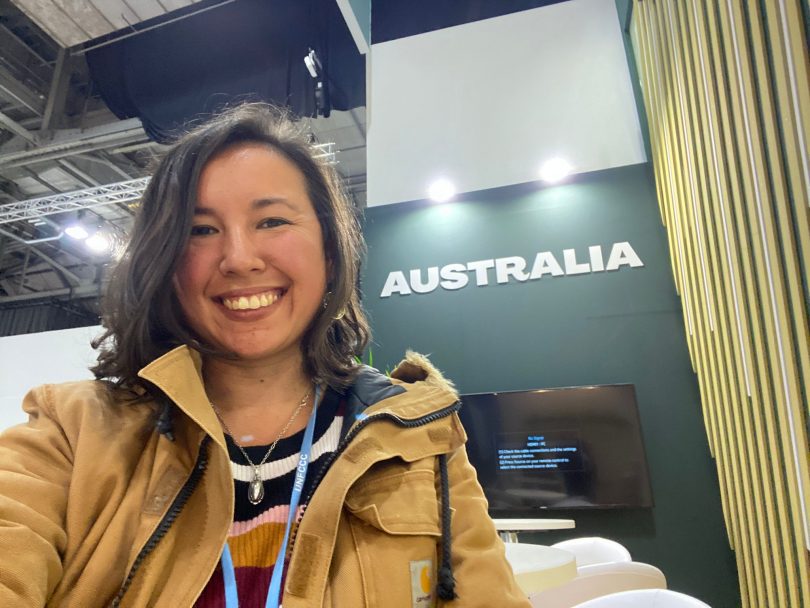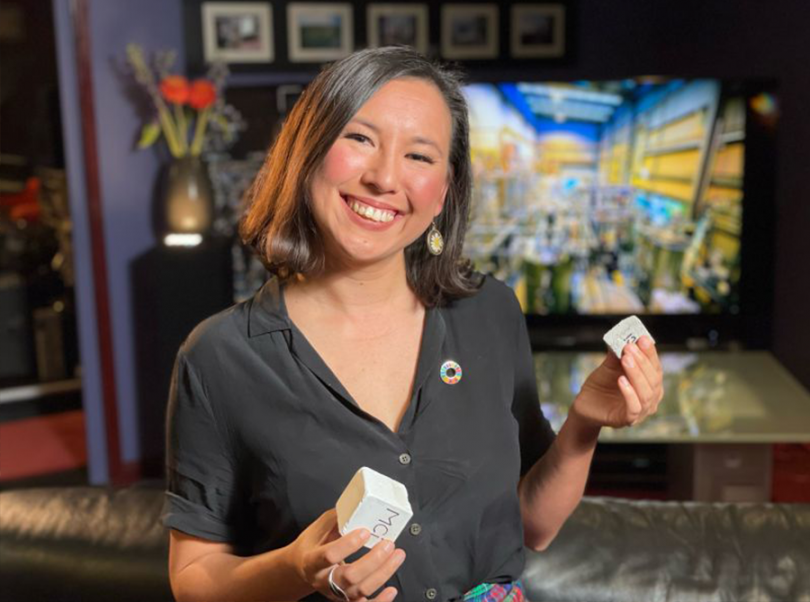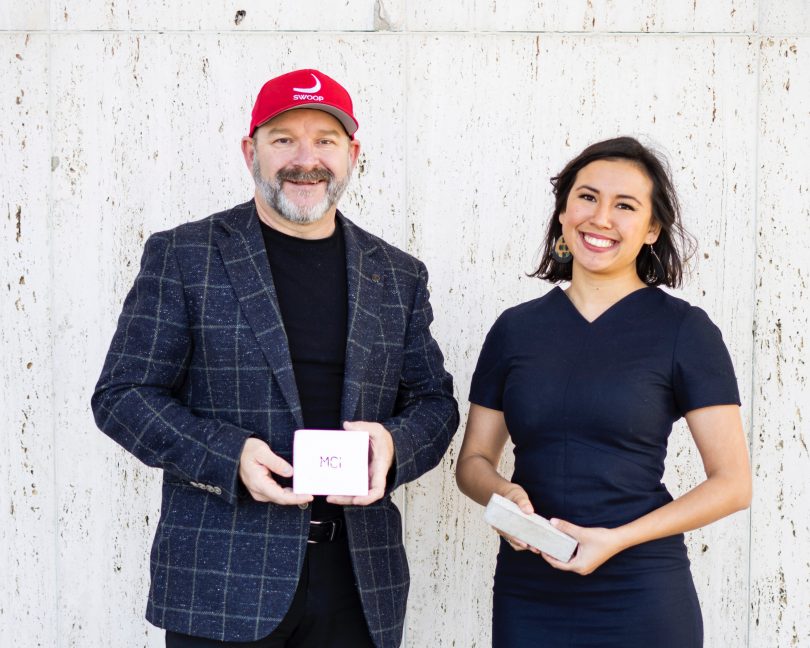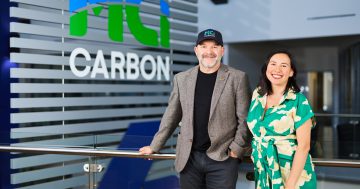
Mineral Carbonation International COO Sophia Hamblin Wang delivered the winning pitch at COP26. Photo: Supplied.
The word alchemist might conjure images of an old bearded man in a long robe swirling a beaker of luminous liquid.
In reality it looks like Sophia Hamblin Wang, the woman at the forefront of a Canberra-based business locking carbon dioxide away forever into useful materials. She has just been named one of 2022’s Young Global Leaders by the World Economic Forum.
Sophia is the COO at Mineral Carbonation International (MCI), a company on the verge of taking its technology to the world.
In the simplest terms, the MCI technology converts CO2 from a gas into a solid by combining it with minerals. It aims to lock away one billion tonnes of CO2 into building materials and valuable products by 2040.

Sophia Hamblin Wang with blocks of carbon at COP26 Climate Change Conference. Photo: Mineral Carbonation International (MCI).
The 33-year-old stole the show at the COP26 UN Climate Change Conference in Glasgow in October last year when she presented MCI’s work and revealed the realm of possibilities within the small blocks of material.
Last week, when the World Economic Forum unveiled 108 of the world’s “most promising” Young Global Leaders for 2022, Sophia found out she had made the cut.
“It is a true honour to be joining this stellar group of Young Global Leaders in 2022, working at the forefront of creating equitable and fair outcomes for the world,” she said.
“Participating in this initiative greatly aligns with the values of MCI to advance a more sustainable and inclusive world.”
Sophia grew up in a caravan in a tiny fishing village in north Queensland. Her parents had met in Canberra, where her mother was a cleaner and her father a political refugee from pre-Tiananmen China, then working as a sous chef in Parliament House.
Towards the end of high school in 2005 she received an Order of Australia Student Citizenship Award, which took her to Brisbane to meet then-Queensland governor-general Quentin Bryce.
A few years later she came back to her parents’ meeting place in Canberra to undertake a degree in international business at the Australian National University (ANU).
By 2013, she was in MCI, working her way up to the management role she holds today.

Marcus Dawe (CEO) and Sophia Hamblin Wang (COO) of MCI took out the global pitch competition at COP26. Photo: MCI.
Sophia is currently a Canberra ambassador for Oz Harvest, ACT Climate Change Council member and lecturer in International Business at Sydney University.
During the selection process Sophia came directly endorsed by “friend and mentor”, Novel Prize laureate and ANU vice-chancellor of the ANU Brian Schmidt.
“I am very proud of Sophia’s leadership in creating a global company that is on a mission to build a more sustainable future,” he said.
“I look forward to Sophia and her company turning the vision of a more sustainable planet into reality.”
Each year since 2004, the World Economic Forum announces a new class of Young Global Leaders (YGL), recognising “remarkable leaders” under the age of 40 who “exemplify hope, empathy, authenticity and the drive to develop solutions that can change the world for the better”.
As a YGL, Sophia joins a growling alliance of 1400 members and alumni representing 120 nationalities.
As a member she’ll now take part in a three-year leadership development program designed to help members “reach their next level of impact”.














